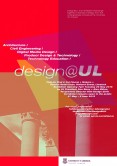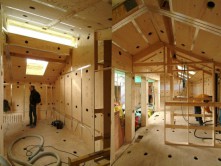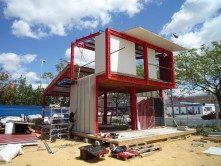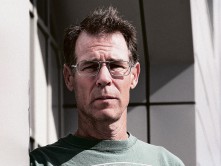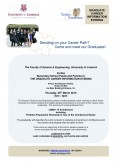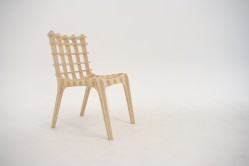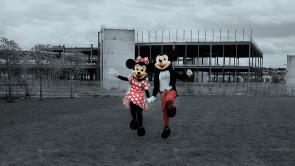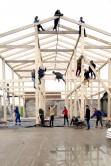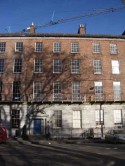140 News
Design@UL 2015
26 May 2015 7:00 pm at Fab Lab Limerick
‘Design@UL’ is an exhibition that brings together a diversity of design work from five undergraduate courses at the University of Limerick: Architecture, Civil Engineering, Digital Media Design, Product Design & Technology & Technology Education.
The New Ways We Build by Bruce Bell
23 April 2015 6:30 pm at SAUL Studio
THE NEW WAYS WE BUILD
A talk about the impact of digital of digital fabrication in design with the support of Irish Design 2015. April 23rd 18:30 at Fab Lab Limerick 
Digital fabrication has been used for rapid prototyping in the manufacturing industry for more than two decades now. New open source designs for 3D printers, laser cutters and CNC machines have dramatically lowered the entry cost for these technologies making them accessible to all sorts of creative disciplines. Designers, craftspersons and architects are using digital fabrication to redefine design at its very core, from new professional roles, to alternatives to mass manufacturing and traditional consumption models.
Facit Homes is one of the first companies in the world to digitally fabricate and manufacture an entire house on-site. The company’s patented D-Process uses a compact, high-tech machine to turn a 3D computer model into exact physical components that can be snapped together like LEGO bricks. Facit Homes’ D- Process was shortlisted as one of 60 finalists for the 2013 Index: Award.
This event has free admission and no previous reservation is required. The talk will be introduced by Javier Burón, Fab Lab Limerick Director.
From the individual to the collective by Santiago Cirugeda
14 April 2015 6:30 pm at Fab Lab Limerick
Santiago Cirugeda is the personification of ‘guerrilla architecture’ and set up the collective Recetas Urbanas which translates as Recipes for the City – to empower other citizens to find loopholes in planning laws to adapt and create their environments.
He has developed a series of subversive projects that explore the complexities of urban life, including the occupation of public spaces and containers; building prostheses into façades, patios and empty lots; and negotiating a way between legal and illegal zones.
Cirugeda has built housing units on rooftops, classrooms on top of a variety of institutions, and civic centres constructed from materials collected from about-to-be demolished buildings. His website details how ‘habitable scaffoldings’ can be attached to the facades of existing buildings, and other dwellings built entirely from waste materials.
Time in the Novel by Kim Stanley Robinson
7 April 2015 5:30 pm at SAUL Studio
SAUL (School of Architecture University of Limerick) and The Ralahine Centre for Utopian Studies UL are proud to welcome one of the most renowned writers of science fiction, Kim Stanley Robinson, to SAUL on 7th April where he will present a lecture entitled “Time in the Novel”. The opening welcome will be made by SAUL Professor Merritt Bucholz followed by an official greeting by Professor Don Barry, President, UL. Professor Emeritus Tom Moylan will then make an introduction.
This SAUL public lecture is free but registration is required beforehand at the following link.
This lecture forms part of ‘A Week With Kim Stanley Robinson’ from 6th-10th April, a unique, interdisciplinary series of events including readings, workshops, lectures, conversations, and site visits, many of which are free to the public (details attached).
Kim Stanley Robinson is a towering, multi-award-winning figure in science fiction, and he has authored over 20 books, including the Mars trilogy(1993-1997) and Aurora(2015). His work deals with some of the most critical social, economic, and environmental issues facing our world, particularly in relation to ecological sustainability, world building, and utopian possibilities. Robinson’s writing resonates with the ethos of the Ralahine Centre for Utopian Studies, which was established in 2003 with a research agenda based on the premise that social values, policies, and practices are shaped by hopeful, utopian visions which is critical to the betterment of life for all members of society.
As Founding Director of the Ralahine Centre for Utopian Studies, which is named after the nineteenth century Ralahine Cooperative in Newmarket-on-Fergus, Professor Emeritus Tom Moylan notes that Robinson’s visit to Limerick and Tipperary marks “a significant moment in the Centre’s twelve-year history of conducting research, teaching, and public programmes on all topics of utopian studies.” Moylan continues, “Kim Stanley Robinson’s work entertains and challenges readers of all generations. Unafraid of writing critical accounts of the world as it is, he is no less afraid of generating realistic future alternatives. Whether in near-future science fiction dealing with rapid climate change or more far-reaching accounts of the settlement of Mars or stories about prehistory or time travel to the future, Robinson is simply one of the best. We are privileged here at UL to have him with us as our guest for a week.”
Short Biography:
Kim Stanley Robinson is a New York Times bestseller and winner of the Hugo, Nebula, and Locus awards. He is the author of more than twenty books, including the bestselling Mars trilogy and the critically acclaimed Forty Signs of Rain, The Years of Rice and Salt and 2312. In 2008, he was named a “Hero of the Environment” by Time magazine, and he works with the Sierra Nevada Research Institute. He lives in Davis, California.
SAUL Graduate Career Information Evening & Portfolio Workshop
26 March 2015 7:00 pm at SAUL Studio
The Faculty of Science and Engineering present monthly graduate career evenings in which former University of Limerick students from degree programmes present an overview of their careers since graduating. This evening will include graduates from LM099 - B Architecture.
The new ways we make. Diatom Studio by Greg Saul in conversation with Leo Scarff
25 March 2015 6:00 pm at Fab Lab Limerick
The new ways we make is a talk series organized by Fab Lab Limerick with the support of Irish Design 2015 about the impact of digital fabrication in design. Digital fabrication have been used for rapid prototyping in the manufacturing industry for more than two decades now. New open source designs for 3D printers, laser cutters and CNC machines have dramatically lowered the entry cost for these technologies making them accessible to all short of creative disciplines. Designers, craftspersons and architects are using digital fabrication to redefine design at its very core, from new professional roles, to alternatives to mass manufacturing and traditional consumption models.
Greg Saul, Diatom Studio http://diatom.cc & http://sketchchair.cc London, United Kingdom. Greg is a designer, programmer, maker who is interested in challenging the roles of the consumer and designer through his work. Diatom.cc is his independent design and invention practice based in London in which he explores the possibilities that digital tools offer to give the end user a role in the design process.
Leo Scarff http://www.leoscarffdesign.com Leitrim, Ireland. Leo is a product designer, design lecturer, consultant and exhibition curator originally from Dublin now based in Manorhamilton, County Leitrim. He has over 20 year experience in the design world, having set up his design studio in 1997 and has lectured on product design and design history since 1999. Currently he is working on setting up a Fab Lab in Manorhamilton with three other collaborators.
The talk will be moderated by Javier Burón, Fab Lab Limerick Director.
Strategies and Tactics by Kazys Varnelis
4 March 2015 5:30 pm at SAUL Studio
BIOGRAPHY: Kazys Varnelis is a lecturer at the School of Architecture, University of Limerick and also teaches at Columbia University and Massachusetts Institute of Technology. He is the Director of the Network Architecture Lab and co-founder of the conceptual architecture/media group AUDC. He has exhibited widely in places such as High Desert Test Sites, the New Museum, and the Museum of Modern Art. He is co-author of Blue Monday: Absurd Realities and Natural Histories, editor of the Infrastructural City. Networked Ecologies in Los Angeles, Networked Publics and The Philip Johnson Tapes: Interviews with Robert A. M. Stern, all published in 2008. He received his Ph.D. in the history of architecture and urban development from Cornell University in 1994, where he completed his dissertation on the role of the spectacle in the production of form and persona in the architecture of the 1970s.
Local Motive by Deirdre A Power
18 November 2014 5:00 pm at SAUL Studio
Power’s practice, premised on the need for radical social change, brings the cultural agenda to the heart of the body politic. She aims to promote dialogue between public agencies and citizens, to engage with the complexities of spatial planning and development, and to foreground the role of the citizen in the planning process. She has led various collaborative projects with civic groups including Urban Tree Project, Tree Council of Ireland, EVA International, and The Hunt Museum. She is represented by the Phatory Gallery, New York and has held residencies at the McDowell Colony, New Hampshire, USA and the Tyrone Guthrie Centre, Monaghan.
‘Assemble London’ by Fran Edgerly-James Binning
11 November 2014 5:00 pm at Fab Lab Limerick
ASSEMBLE are a young award-winning practice of designers, researchers and artists whose work focuses on public space and collaborative practice. Three years ago they established their office in the form of Sugarhouse Studios, in the Olympic Fringe of East London.
This lecture will discuss the iterative development of this space in relation to Assemble’s practice and the surrounding communities: from Cinema and Pizzeria, to workshop and studio complex. This includes a number of local projects in the surrounding areas of Bow and Stratford that have been made possible by Assemble’s residency in Sugarhouse.
Who built Georgian Limerick? by Judith Hill, Architectural historian, Trinity College, Dublin
4 November 2014 5:00 pm at SAUL Studio
Judith will look at the roles of the agencies and individuals who were involved in the construction of Limerick’s Georgian new town; landowners, speculators, architects, craftsmen, local and central government.

